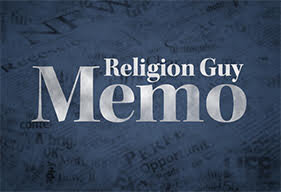On Inauguration Day last week, CNN was newly proclaimed to be politically on the "Left," joining rival MSNBC. Previously, the cable news net was in the softer "Lean Left" category that includes news coverage by The New York Times, The Washington Post, Time magazine, The Economist, The Atlantic, Bloomberg, Politico, ABC, CBS and NBC.
Meanwhile, Fox News, New York Post, Washington Examiner, Washington Times, Christianity Today, ChristianPost.com and Salt Lake City's Latter-day Saint Church-owned Deseret News are considered to "Lean Right." Breitbart, Daily Caller, Daily Wire, Federalist and Fox News opinion shows are straight-up "Right," as is the Rev. Pat Robertson's Christian Broadcasting Network.
Not many major news organizations are positioned in the less partisan "Center." They include The Associated Press (though its Fact Check feature "Leans Left"), Axios, BBC, Christian Science Monitor, Forbes, NPR news (though its opinion fare "Leans Left"), Reuters, The Hill, USA Today and The Wall Street Journal's news copy.
Who sez?
The team at Allsides.com, whose continually updated "Media Bias Ratings" compiled from readers and viewers judge 800 outlets on the five-point scale, ranging from BiblicalSexology.com (!) to ZeroHedge.com.
The site also posts current media examples that demonstrate ideological slant, as well as articles of interest to reporters such as a history of "wokeness" picked up from Vox.com (rated "Left").
The judgments are debatable, of course, but worth considering.
The bias-o-meter assesses only online media postings, not what's issued in print or broadcast. We're told that ratings "do not reflect accuracy or credibility; they reflect perspective only."
Though "bias" sounds negative, this site doesn't oppose point-of-view journalism but seeks to fairly characterize news organizations and inform consumers accordingly.
Allsides boasts that its three co-founders are "a proud, active Republican" and former party operative, "a proud, active Democrat" who co-founded MoveOn.org, and the tech guy who's "more centrist and less active politically." The operation lives off donations, which have included groups linked with the likes of Tom Steyer on the left and Charles Koch on the right.
The Guy especially calls attention to this site's memo on "How to Spot 11 Types of Media Bias." Some examples cited in the listing that's summarized below may be challenged but there's valuable guidance for news audiences in post-Donald Trump adjustments and -- importantly for GetReligion purposes -- this invites journalists to wholesome examination of their own performance.
(1) Spin. Use of vague or dramatic words to go beyond "objective, measurable facts." Cited words include refuse, crucial, high-stakes, tirade, landmark, offensive, finally, conceded, admission, mocked, bragged or boasted. You'll see The Guy used the last word above. And hey, sometimes a landmark is a landmark.
(2) Unsubstantiated Claims. Journalists make statements that "appear to be fact" without providing "specific evidence" to back them up.
(3) Opinion Statements Presented as Facts. Journalists use subjective verbiage based on "personal opinions, assumptions, beliefs, tastes, preferences or interpretations" under the guise of objective reporting. Be careful with words like seemingly, apparently, extreme, worse, suggest or possibly.
(4) Sensationalism/Emotionalism. Information is framed to provoke a strong reaction, often vague, that "can't be objectively corroborated," at the expense of accuracy. Here, words to watch include shocking, remarkable, chaotic, onslaught, scathing, shame, forcing or desperate.
(5) Mudslinging/Ad Hominem. Unfair or insulting material about a person's motive or character employed to damage reputation, usually to divert attention from the person's actual argument or idea.
(6) Mind Reading. Journalists assume they know what a person thinks, or propose that the way they themselves see things must be the way the world really is.
(7) Slant. An article tells only part of the story, cherry-picking information to support one side while ignoring other perspectives, which narrows understanding.
(8) Flawed Logic. Coverage that misrepresents opinions or reaches conclusions that are "not justified by the given evidence."
(9) Bias by Omission. A news shop mostly covers only certain story themes and omits others, or omits information within a story "that would support an alternative viewpoint."
(10) Omission of Source Attribution. A classic debate. Allsides says this tactic is "sometimes useful or necessary" but readers should be clear that it's potentially unreliable "second-hand information," though not necessarily false.
(11) Bias by Placement. In old newspaper parlance, viewpoint is shown by whether a story is displayed on page one or "above the fold." TV and the Internet have obvious equivalents. Placement within a story can have the same effect.
To conclude, permit The Guy to comment that the use of most of these 11 practices are becoming the standard business model for cable TV programs that are often called "news."
FIRST IMAGE: A .GIF version of the Politifact Truth-O-Meter.



